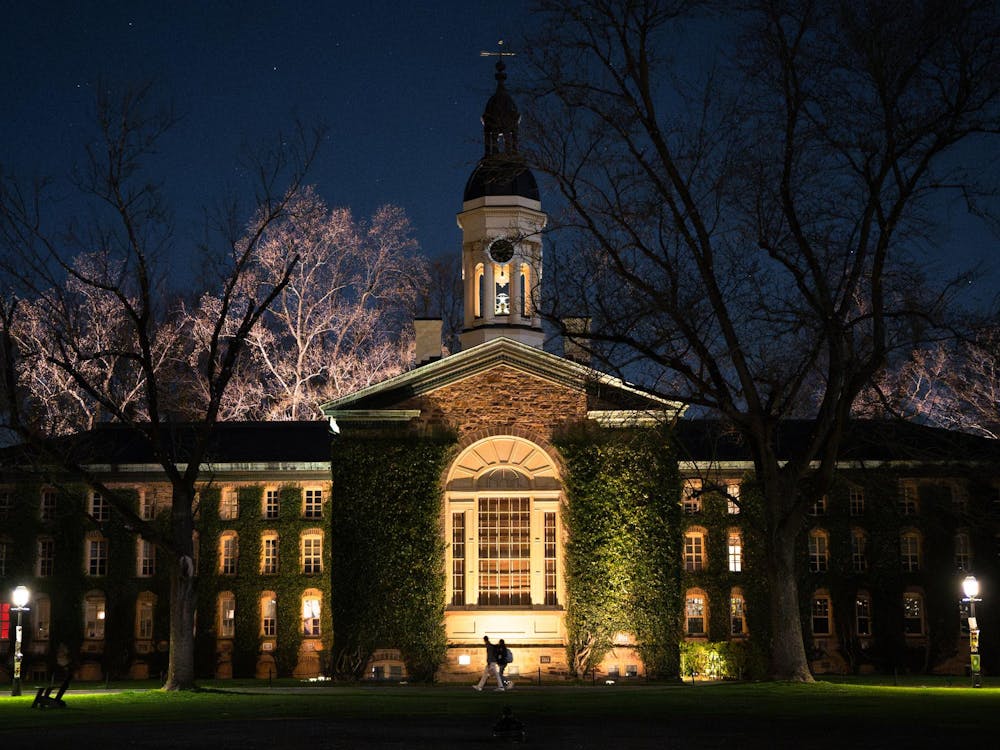As President Shapiro ends his tenure at the end of this month, it is unclear exactly what his legacy will be. In my view — and others' — Shapiro has been superb as a fundraiser but must be challenged for the decisions that have been made about how to use the funds in a constructive manner.
These days, it seems as though 'constructive' is the operative word guiding University expenditures. The past year has seen the completion of construction projects on the new Frist Center, Wallace Hall and Stephens Fitness Center. The chapel has been covered in sky-high scaffolding on one side or the other for a year now — and the cleaning still hasn't ended. Blair, Patton and Little halls have undergone construction over the past two years as part of the University's ongoing project to modernize all of the residential dormitories. Scully was just built when this year's seniors were freshmen. Next year, Dod Hall will be closed while it undergoes renovation.
That's not all, you know. There is currently a huge sinkhole in the ground next to Scully for the construction of the genomics center. Marquand Library and much of the rest of McCormick Hall will undergo construction next year and, if I'm not mistaken, the year after that as well. East Pyne, Burr, Robertson Hall (and Scudder Plaza) and 185 Nassau are also slated for renovations next year. Additionally, the sixth residential college and extra upper-class housing will begin to be built and Dillon will soon undergo a ten-year long renovation project.
While I acknowledge that the modernization of these buildings is desirable and (in certain cases) necessary, I can make at least two objections to the University's plan — one practical, the other theoretical.
Practically, with all of the ongoing construction, the campus is hardly the bucolic paradise that admissions brochures make it out to be. Will there be anywhere this side of Forbes out of view (more importantly, out of earshot) of some construction project? Is Neo-Gothic architecture the dominant style on this campus, or is scaffolding? Or is next year's scaffolding going to have pointed arches and flying buttresses?
The other argument is theoretical. An important principle in architecture and planning — in this case, campus planning — is that open spaces are as critical as solid structures, if not more so. What would New York City be, for instance, without the respites provided from urban congestion by Central Park, Washington Square Park and other green spaces?
Increasingly, this campus is becoming less and less open space and more large buildings. Whether or not one likes the contemporary architectural style of Robert Venturi '47, who seems to be designing every new building on campus these days, isn't really of relevance. What is of relevance is that more and more buildings are being constantly constructed.
Of course, this isn't only a problem here on campus. Nationally, the phenomenon of urban sprawl is consistently infringing upon undeveloped areas. Locally, Mercer County authorities intend next year to construct the Millstone Bypass, a new road that may cause the elimination of the beautiful alley of trees that line Washington Road between U.S. Route 1 and Faculty Road.
Perhaps it is time for the University, under the auspices of our new president, to invest more in our human capital and less in physical capital. 'Renovations' to certain academic programs are needed, as is the 'construction' of better relations between ethnic groups on campus, the University and its workers, the advisory system and the arts programs on campus. If any physical constructions should be done, I'm certain that campus theater groups, among others, might want to have their voices heard. New buildings can be nice, but there's something to be said for "less is more" as a philosophy as well.
(Dan Wachtell is a philosophy major from Rye, NY. He can be reached at wachtell@princeton.edu)








